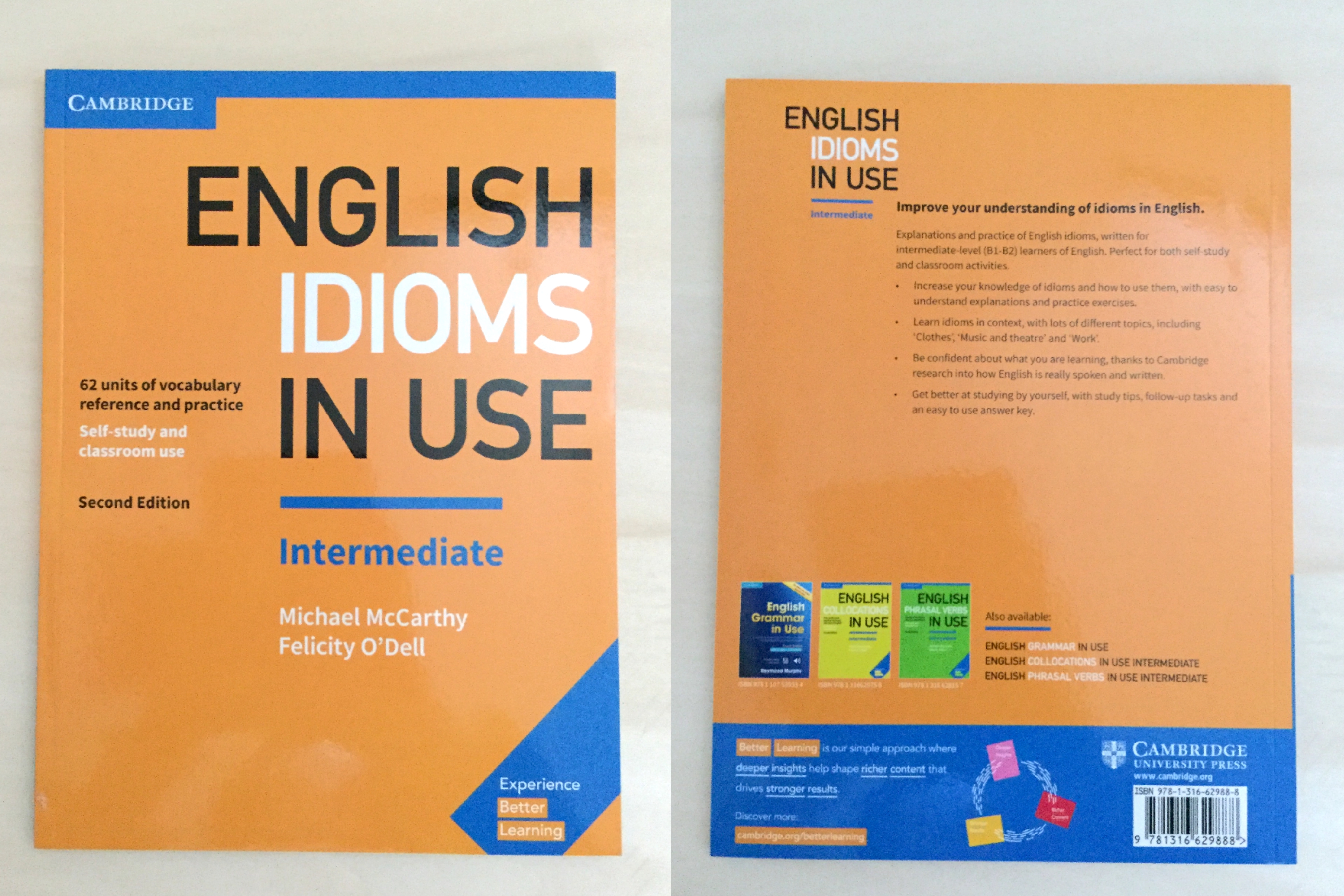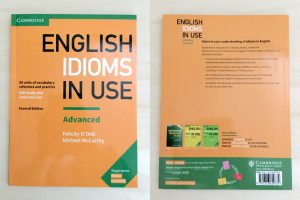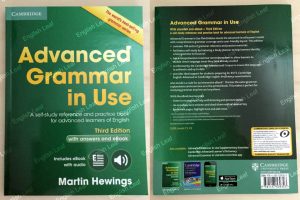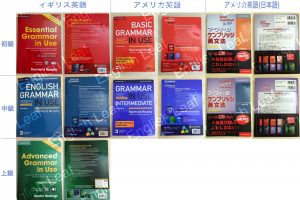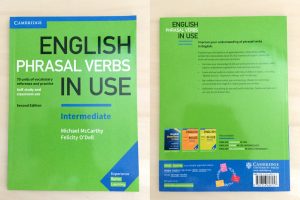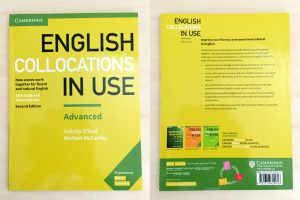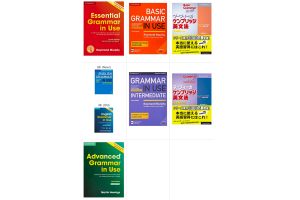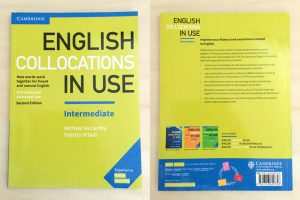【文法書のバイブル! English Grammar in Useシリーズの種類と選び方】も確認する
English Grammar in Useからのイディオム中級
Idiomsというのは、いわゆる慣用句のことです。Idiomsは英語を話すときに頻出するため、英語学習をするときには無視することのできないものです。また、Idiomsを知らないと会話の中で意味を取り違えてしまい、思わぬ誤解に発展するかもしれません。本書は、Idiomsの意味や使い方について扱っています。中級と上級にレベルが分けられていて、本書は中級です。
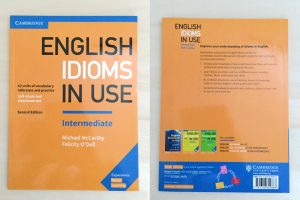
Contents
Acknowledgements
Using this book
Learning about idioms
1 What are idioms?
2 Using your dictionary
Idioms to talk about …
3 Happiness and sadness
4 Anger
5 Knowing and understanding
6 Experience and perception
7 Success and failure
8 Having problems
9 Dealing with problems
10 Power and authority
11 Structuring and talking about arguments
12 Conversational responses
13 Praise and criticism
14 Opinions on people and actions
15 Behaviour and attitudes
16 Reacting to what others say
17 Danger
18 Effort
19 Necessity and desirability
20 Probability and luck
21 Social status
22 Human relationships
23 Size and position
24 Money
25 Work
26 Speed, distance and intensity
27 Communication 1: words and language
28 Communication 2: expressing yourself
29 Life and experience: proverbs
30 Memory
Idioms from the topic area of …
31 Time 1: the past and the future
32 Time 2: clocks and frequency
33 The elements
34 Colour
35 Clothes
36 Games and sport
37 Animals 1: describing people
38 Animals 2: describing situations
39 Weapons and war
40 Food
41 Roads
42 Houses and household objects
43 Nature
44 Boats and sailing
45 Science, technology and machines
46 Music and theatre
Idioms using these keywords:
47 Finger, thumb, hand
48 Foot, heel, toe
49 Bones, shoulder, arm, leg
50 Head
51 Face, hair, neck, chest
52 Eyes
53 Ear, lips, mouth, nose, teeth, tongue
54 Heart
55 Brain, mind, blood and guts
56 Back
57 Long
58 Line
59 Act, action, activity
60 Good and bad
61 Ground
62 Similes and idioms with like and as
Key
Phonemic symbols
Index
Acknowledgements
Sabina Ostrowska wrote two new units for the Second Edition: Unit 35, Clothes, and Unit 46, Music and theatre. The publishers would like to thank Sabina for her contribution to this edition.
The authors and publishers acknowledge the following sources of copyright material and are grateful for the permissions granted. While every effort has been made, it has not always been possible to identify the sources of all the material used, or to trace all copyright holders. If any omissions are brought to our notice, we will be happy to include the appropriate acknowledgements on reprinting & in the next update to the digital edition, as applicable.
Key: BL = Below Left, BR = Below Right, C = Centre, CL = Centre Left, CR = Centre Right, TR = Top Right, TL = Top Left.
Using this book
Why was this book written?
It was written to help you improve your knowledge of idioms in English. Idioms are fixed expressions whose meaning is not immediately obvious from looking at the individual words in the idiom. You will come across a great many idioms when you listen to and read English. So it is important that you learn about the meanings of idioms and about how they are used.
You can use this book either with a teacher or for self-study. We wanted to encourage language learners to have a balanced approach to idioms in English. Sometimes in the past, teachers used to argue that it was a waste of time for learners to study idioms as they might start using them in an inaccurate or unsuitable way.
But idioms are in such widespread use that it is inappropriate to ignore them. This book focuses just on those idioms which the modern student needs to know and it aims to provide the information and practice which will help you understand and use them correctly.
How were the idioms in the book selected?
There are a great many idioms in English, but some of them sound rather old-fashioned or are not very widely used. The idioms which are worked on in this book were mainly selected from those identified as significant based on computer searches of huge language databases: the CANCODE corpus of spoken English, developed at the University of Nottingham in association with Cambridge University Press, and the Cambridge International Corpus of written and spoken English (now known as the Cambridge International Corpus).
These databases show us how the idioms have actually been used by native speakers of English in conversations, newspapers, novels, and many other contexts. The idioms selected are all also to be found in the Cambridge Advanced Learner’s Dictionary 4th Edition where additional examples and usage notes will also be found. You can search this dictionary online by going to the following website: http://dictionary.cambridge.org
How is the book organised?
The book has 62 two-page units. The left-hand page presents the idioms that are worked on in the unit. You will usually find an explanation of the meaning of each idiom, an example of it in use and, where appropriate, any special notes about its usage. The right-hand page checks that you have understood the information on the left-hand page by giving you a series of exercises that practise the material just presented. The exercises pay particular attention to checking your understanding of the idioms and how they are used because this is more important for most learners than being able to actively use the idioms.
The units are organised in three sections:
Idioms to talk about … which groups idioms according to the topic area that they are used to talk about. Thus, be snowed under [have an enormous amount of work to do] is included in Unit 25, Work.
Idioms from the topic area of… which groups idioms according to the image they are based on. Thus, hit the roof (react in a very angry way] is included in Unit 42, Houses and household objects. Idioms using these keywords which groups idioms according to keywords in them. For example, Unit 50 deals with a set of idioms based on the word head.
The book also has a key to all the exercises and an index which lists the 1.000 idioms we deal with and indicates the units where they can each be found.
How should I use this book?
The first two units of the book, Unit 1, What are idioms? and Unit 2, Using your dictionary are introductory units. It is strongly recommended that you work through these units first. After that, you may work on the units in any order that suits you.
What else do I need in order to work with this book?
You need a notebook or file in which you can write down the idioms that you study in this book as well as any others that you come across elsewhere.
You also need to have access to a good dictionary. We strongly recommend the Cambridge Learner’s Dictionary as this gives exactly the kind of information that you need to have about idioms. Your teacher, however, may also be able to recommend other dictionaries that you will find useful.
So, we hope that this book will’shed light’ on all you need to know about English idioms (see Unit 9) and that, by the time you finish the units, you’ll be saying: ‘English idioms? A piece of cake!’ (see Unit 18).

